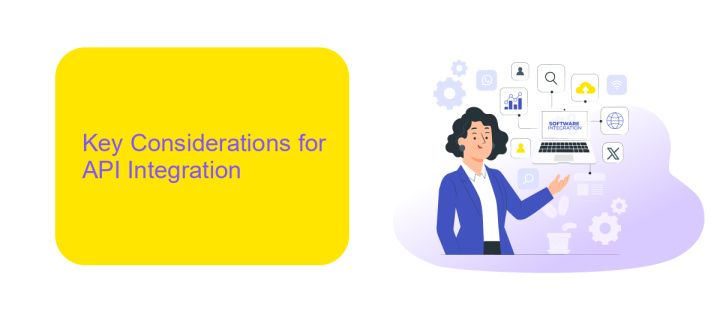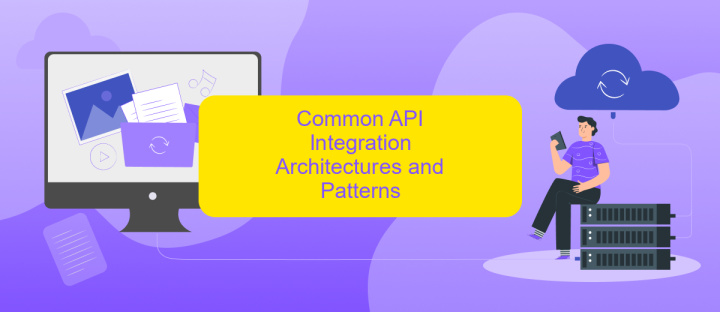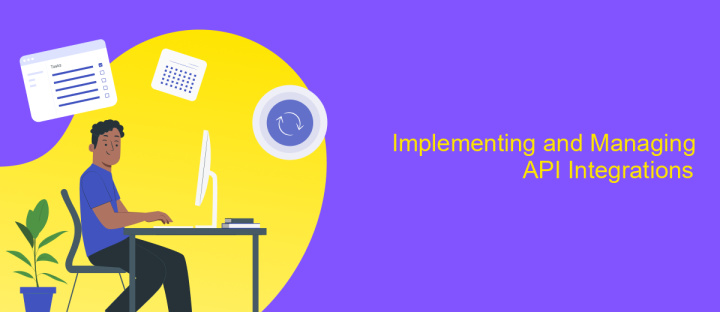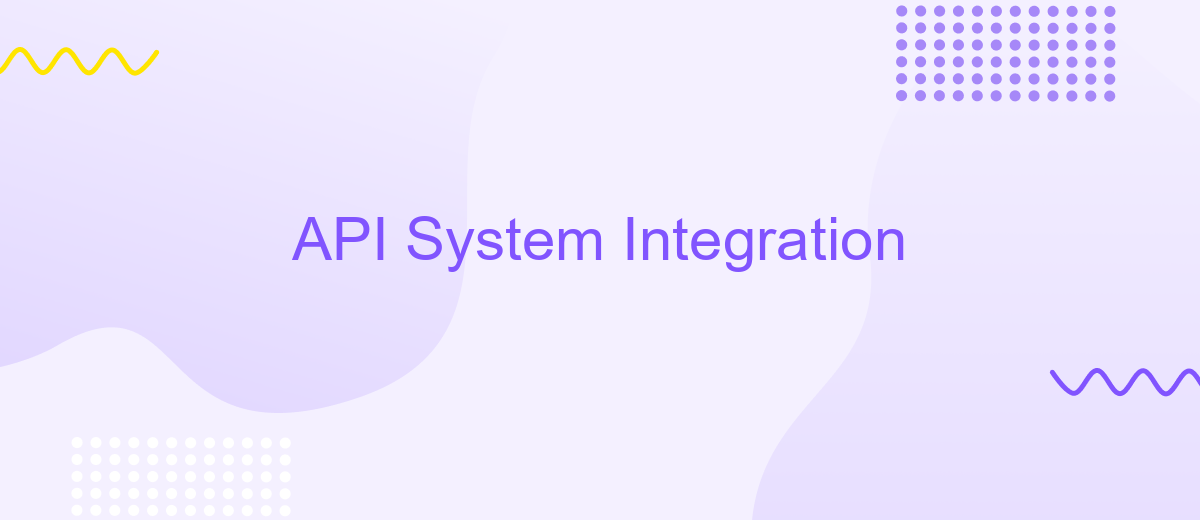API System Integration
In today's digital landscape, API system integration plays a pivotal role in enhancing organizational efficiency and connectivity. By seamlessly linking diverse software applications, APIs enable the smooth exchange of data and functionality across platforms. This integration not only streamlines operations but also fosters innovation, allowing businesses to adapt swiftly to evolving market demands. Explore how API system integration can transform your enterprise into a more agile and responsive entity.
Understanding API System Integration and its Benefits
API system integration is a critical process that enables different software applications to communicate and work together seamlessly. By allowing diverse systems to exchange data and functionalities, API integration enhances operational efficiency and streamlines workflows. This integration is essential for businesses aiming to leverage multiple software solutions without encountering compatibility issues.
- Improved data sharing: APIs facilitate real-time data exchange, ensuring that information is always up-to-date across platforms.
- Enhanced automation: By integrating APIs, businesses can automate repetitive tasks, reducing manual effort and minimizing errors.
- Scalability: API integration supports business growth by allowing systems to scale efficiently, accommodating increased data and user demands.
- Cost-effectiveness: Reducing the need for custom software development, API integration lowers operational costs and accelerates deployment times.
In conclusion, understanding API system integration is vital for organizations seeking to optimize their digital ecosystems. By leveraging the benefits of API integration, businesses can achieve greater agility, improve customer experiences, and maintain a competitive edge in a rapidly evolving technological landscape. Embracing this approach not only simplifies operations but also opens up new avenues for innovation and growth.
Key Considerations for API Integration

When embarking on API integration, one of the primary considerations is understanding the requirements and capabilities of both the source and target systems. This involves analyzing data formats, authentication methods, and rate limits. Ensuring compatibility between the systems is crucial for seamless data exchange. Additionally, security should be a top priority; implementing robust authentication and encryption measures helps protect sensitive data during transmission. Thorough documentation and a clear understanding of the API's functions and limitations are essential for successful integration.
Another key aspect is selecting the right tools and platforms to facilitate the integration process. Services like ApiX-Drive can simplify this task by offering a user-friendly interface to connect various applications without extensive coding. It allows businesses to automate workflows efficiently, saving time and reducing the potential for errors. Monitoring and maintaining the integration post-deployment is equally important to ensure ongoing reliability and performance. Regular updates and testing can help address any issues that arise, ensuring the integration remains effective and aligned with business needs.
Common API Integration Architectures and Patterns

API integration is a cornerstone of modern software development, enabling diverse systems to communicate seamlessly. As businesses increasingly rely on interconnected applications, understanding common API integration architectures and patterns becomes essential. These architectures facilitate data exchange, enhance functionality, and streamline processes across platforms.
- Point-to-Point Integration: This straightforward approach connects two systems directly, ideal for simple integrations but can become cumbersome as the number of connections grows.
- Hub-and-Spoke Architecture: A central hub manages communication between systems, reducing the complexity of multiple direct connections and offering centralized control.
- Event-Driven Architecture: Systems communicate through events, allowing real-time data exchange and responsiveness to changes, enhancing scalability and flexibility.
- API Gateway Pattern: Serves as a single entry point for API requests, providing security, load balancing, and protocol translation, simplifying client interactions with multiple services.
By choosing the appropriate architecture and pattern, organizations can optimize their API integrations for performance, scalability, and maintainability. Each pattern offers distinct advantages and trade-offs, making it crucial to align the choice with specific business needs and technical requirements. Effective API integration not only enhances system interoperability but also drives innovation and growth.
Implementing and Managing API Integrations

Implementing API integrations involves a series of steps to ensure seamless communication between different systems. Initially, it's crucial to define the integration requirements clearly, identifying the data to be exchanged and the expected outcomes. Once the requirements are set, selecting the appropriate API that aligns with the system's needs is essential. This involves evaluating API documentation, compatibility, and support.
After selecting the API, the development phase begins, where coding and configuration are performed to establish connections between systems. It's important to conduct thorough testing during this phase to identify and resolve any issues that might arise. Testing ensures that the integration functions as intended and meets the set requirements.
- Define integration requirements and expected outcomes.
- Select the appropriate API based on compatibility and documentation.
- Develop and configure the integration.
- Conduct comprehensive testing to ensure functionality.
Managing API integrations involves monitoring performance and making necessary adjustments over time. Regularly reviewing API updates and changes is crucial to maintain compatibility and functionality. Additionally, implementing security measures is vital to protect data integrity and prevent unauthorized access. Continuous management ensures that the integration remains efficient and secure, adapting to any evolving business needs.
- Automate the work of an online store or landing
- Empower through integration
- Don't spend money on programmers and integrators
- Save time by automating routine tasks
Best Practices and Future Trends in API Integration
Effective API integration necessitates adherence to best practices to ensure seamless connectivity and functionality. One key practice is the use of RESTful APIs, which offer scalability and flexibility. It's crucial to implement robust authentication mechanisms, like OAuth, to secure data exchanges. Additionally, thorough documentation is essential for developers to understand API capabilities and limitations, fostering ease of integration. Testing is another critical aspect; utilizing automated testing tools can help identify potential issues early in the development process. Services like ApiX-Drive can simplify the integration process by providing a user-friendly interface for connecting various applications without requiring extensive coding knowledge.
Looking forward, the future of API integration is poised to embrace emerging technologies and trends. The rise of AI and machine learning is expected to enhance API capabilities, enabling more intelligent and context-aware interactions. Additionally, the increasing adoption of microservices architecture will drive the need for more efficient API management solutions. As businesses continue to shift towards digital ecosystems, the demand for real-time data processing and seamless connectivity will grow, emphasizing the importance of APIs in facilitating these integrations. Staying informed about these trends will be crucial for businesses aiming to maintain a competitive edge in the digital landscape.
FAQ
What is API system integration?
How do I choose the right API for integration?
What are the common challenges in API integration?
How can I automate API integrations?
What should I consider regarding security in API integrations?
Do you want to achieve your goals in business, career and life faster and better? Do it with ApiX-Drive – a tool that will remove a significant part of the routine from workflows and free up additional time to achieve your goals. Test the capabilities of Apix-Drive for free – see for yourself the effectiveness of the tool.


